My name is Christian Schroeder and I live in Hannover, Germany. I can divide my photography into two modi operandi. On the one hand, I like a slow and thoughtful approach. That means using rather large cameras in combination with a tripod and searching thoroughly for the right spot. On the other hand, I enjoy the informal way with a light and simple camera. Just point – and shoot. For me, these two approaches are like the yin and yang: I can’t have one without getting the other, variety is the key. I already reported on my formal-type photography, this time it’s all about my point-and-shoot photography.
My Growing Family of Point-and-Shoots
Well, I must confess that I underestimated the capabilities of point-and-shoots for a long time – and the fun these cameras deliver! I was something like a rangefinder snob: “Hey, I want full control!”, “How can I frame properly without a large and bright viewfinder?”, “Damn it! I don’t want the camera to focus for me”, “Whaaat? I can not choose the aperture myself?” Eventually, doubts started to come up. “Why is everybody talking about cheap point-and-shoots?”, I thought. “Is there really a magic inside them that provides so many people with so much joy?” Being a good opportunist, I radically changed my mind. That’s how I started my point-and-shoot journey last year with a Ricoh TF-900 (aka TF-500). I then quickly bought a Nikon L35AD2 because I heavily desired date imprints in my photographs (read Taylor’s thoughts on quartz date cameras here).
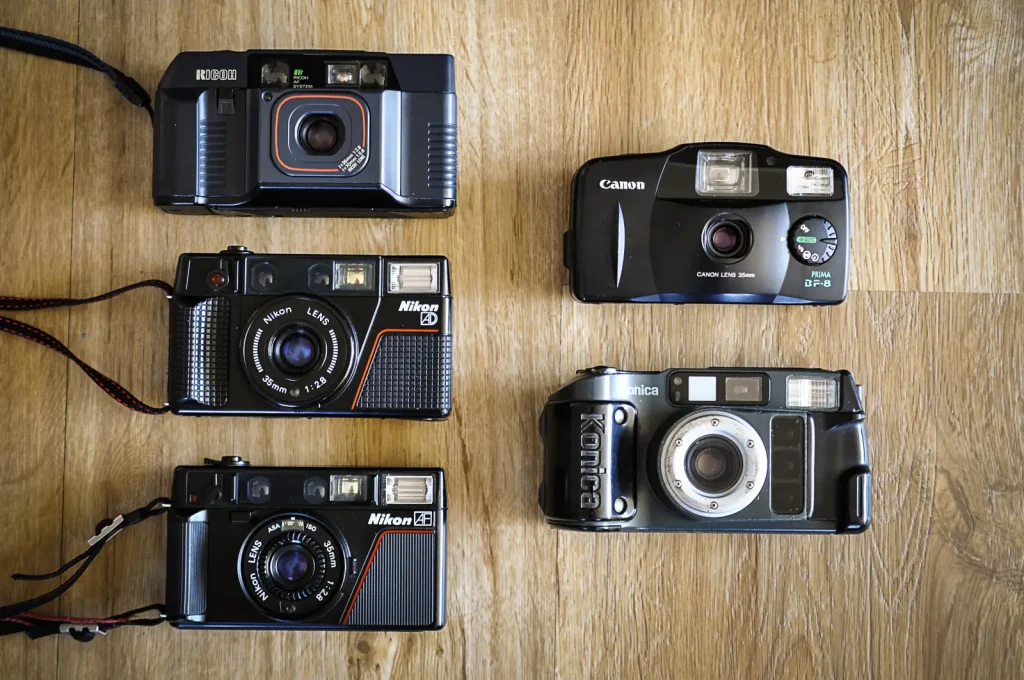
Recently, I also added a first generation Nikon L35AF to my fleet – driven by sheer fear. Are these the last days compacts are still affordable(-ish)? After quite a few rolls I can state that I slightly prefer the Nikons over the Ricoh: the boxier the cooler. Aaaand Nikon’s decision to power their point-and-shoots by simple AA batteries definitely deserves a medal!
Shooting Range (Low Light Ability)
All my point-and-shoots are equipped with (35mm) f/2.8 lenses. In combination with color negative film shot a EI 100, these cameras don’t rank among the most powerful night-vision devices. Their built-in flash can help in this regard but isn’t sufficient or desired for every subject. But that’s not a big problem for me. If I set off for a photo walk that could last until dusk, I normally drop a rangefinder camera into my backpack. The rangefinder doesn’t weigh to much, but significantly extends my shooting range due to its fast prime lens. It also offers ability to shoot slow shutter speeds handheld. Point-and-Shoot and rangefinder, both types of cameras complement each other (even further if I use the rangefinder with a 50mm lens).
Some Observations on Point-and-Shoots
I noticed that the cameras occasionally miss focus. With all my point-and-shoot cameras I have to rely on their autofocus system. Besides a rather unsophisticated distance readout in the viewfinder there is no way to check whether focus is achieved correctly (As Hamish points out in his Canon MC review, it even gets worse). Initially I got very upset if a missed focus impaired an otherwise great photograph, but hey! Sometimes you win, sometimes you lose. In my opinion, taking things too seriously contradicts the concept of the point-and-shoot photography.
My Nikon L35AD2 exposes a faint white line onto each frame, running exactly parallel to the left edge. Carefully scrutinizing the black box (pun intended), I yet couldn’t figure out where this line arises from. I even covered large parts of the camera’s body with tape – no effect. Meanwhile, I have accepted the line as a loveable little imperfection.
I get my images developed and scanned at MeinFilmLab. Normally, I wait until I have at least five rolls exposed before I send the batch off. (It’s my attempt to save mailing charges on the one side and to keep down the potential loss in case the mail company loses my letter on the other side.) That means there are 180+ images piled up – some of them I’m eager to see, others I totally forgot. I enjoy questioning my memory how many shots it can recall, an activity I dearly missed while shooting digital. Point-and-shoot cameras seem to favor this with their comparatively fast pace / high-throughput style of photography – more shots, more to contemplate about.
Time Travel…
The aesthetics of a point-and-shoot camera appeals to me because it allows me to travel in time. It’s not only the eighties-oozing design of the camera itself. If an image looks like it was taken two or three decades ago, I’m excited. To obtain this impression, vignetting and harsh flash light definitely help, and expired film also takes a share. Really important for me is the subject: I try to exclude anything from the frame that directly points to our modern times. Outdated cars even act as a “shortcut” in this regard. If there is a 30plus-year-old sedan pictured, the image itself might be similarly old. In my head, I named this “creating fictional memories” – I capture images that evoke the feeling of bygone times. Times I didn’t experience myself because I hadn’t been born back then.
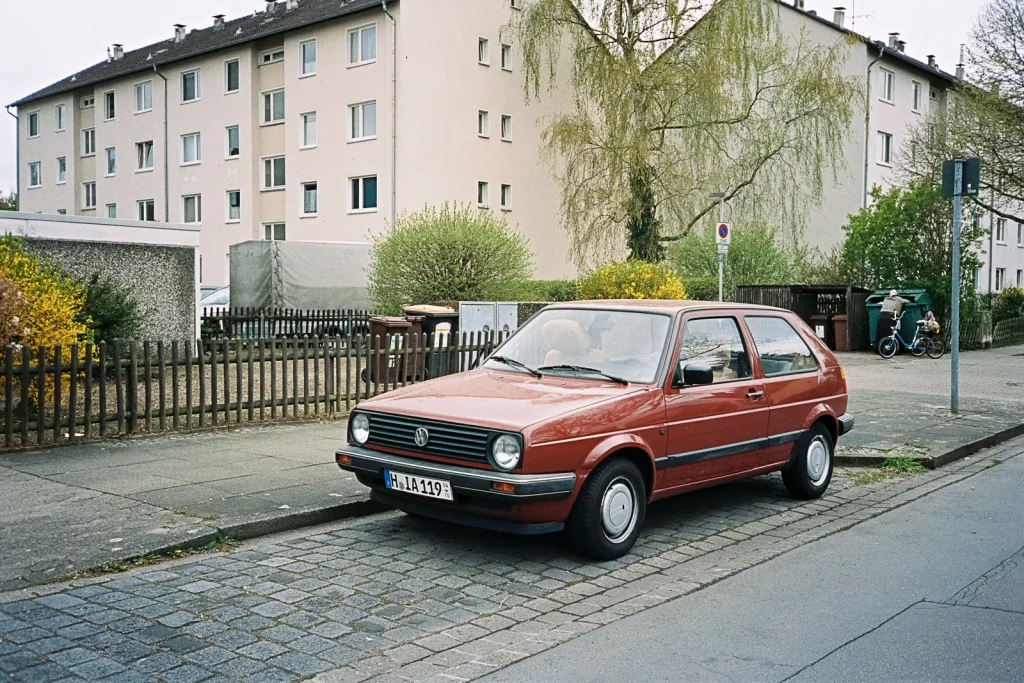
…and Time Capsule
However, from time to time I do the opposite: I consciously capture contemporary objects that will look outdated somewhere in the remote future (difficult to foresee, though). These images have to ripen first, will later serve as “time capsule”. Keep in mind: What appears common (and boring) today, might be rare or even gone in a decade. Did you imagine back in 1999 that the then omnipresent payphones are now a needle in the city’s haystack? When was the last time you saw a telegraph line with its wooden pylons? If I view a photograph taken by my father in the eighties, I’m overwhelmed by these many subtle changes visible in the scenery. This might be the shape of the bus shelters, the street signs’ font or the branding of a fast food chain – I’m sure some further examples will cross your mind.
Drawn to “Technical” Subjects
With point-and-shoot cameras I mainly stroll through the city, without a specific plan in mind. Sometimes I have a look at the map first. “Might this be an interesting neighborhood?”, I ask myself. “Let’s find out!” I feel drawn to rather technical subjects: cars, trucks, cranes, industrial sites. Dilapidated backyards inspire me, also crooked brick walls or dented dumpsters. My preference for technological things was implanted by my dad, I suppose. When I was kid, we often visited meetings of vintage cars or drove to the train station to watch a historic steam engine visiting our town.
I remember a particular episode: We used to buy our groceries every Saturday in a big supermarket. Behind the parking area ran a connecting track to an industrial harbor, with trees and bushes shielding most of the track. From time to time after shopping, me and my dad had a look: Maybe we were lucky and see a train passing by? Indeed, one day a small diesel locomotive was sneaking down the track. Then, nothing more than a miracle happened (at least for the 7-year-old I was at the time). The train driver brought his loco to a halt, leaning out of the window and asking my dad if we would like to join him in the driver’s cab for a couple of minutes. Sure we did!
Some Images and the Stories Behind Them
I love reading reviews and reports how others use a specific piece of equipment. But I also (or even more) enjoy viewing images and learn about their stories. Which aspect of a scene appealed to the photographer so that she or he decided to push the button? Therefore, I want to share some of my own thoughts and preferences.
The images shown below were shot on Kodak Portra 400, in case you were wondering. I usually cover the DX code with black tape, forcing the point-and-shoots to expose at EI 100. We now reached the point where I must declare Portra my love. It has this subtle set of colors with a pastel touch when overexposed – so far, so familiar. I particularly like the film if shot under an overcast sky. When I recently saw Filipa’s photographs of a wintry New York here at 35mmc, I instantly recognized Portra’s signature.
Cars (Vans, Trucks…)
Cars are a fantastic subject. I love them! I could spend the whole day walking through the town just looking out for interesting vehicles. You can take photos with a car embedded in its environment, a car portrait or a just an exciting detail. Cars that are parked in the city often require a fair amount of ingenuity as the background is cluttered by all kind of things. Furthermore, parking spots are a rare and threatened species in German cities – meaning that an extraordinary car is mostly crammed together by two boring cars. But as wise people said before: Constraints always foster creativity.
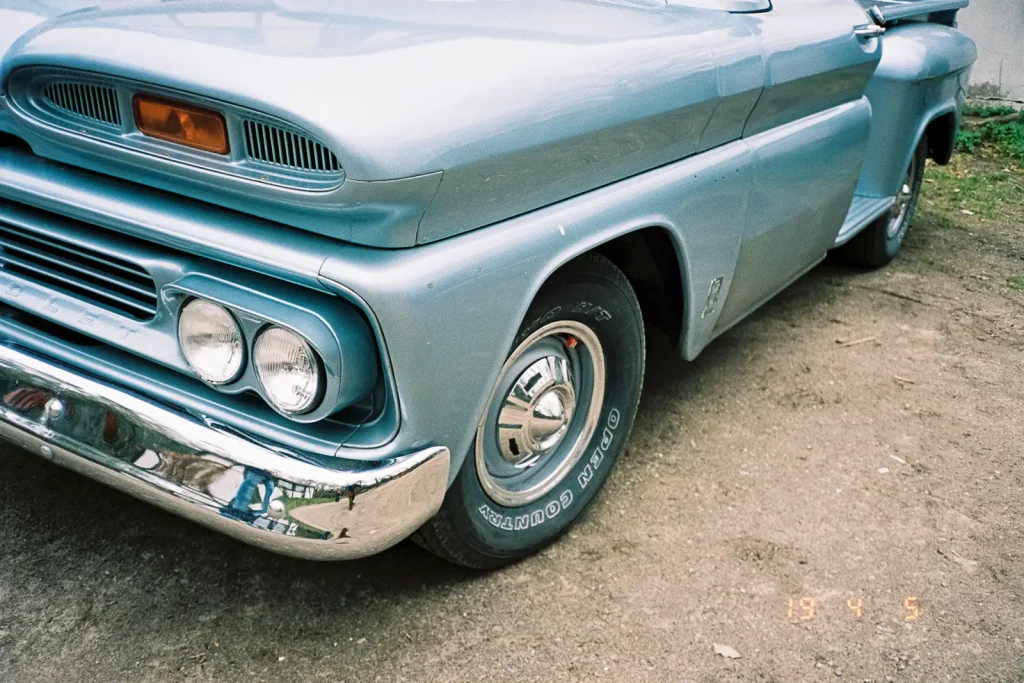
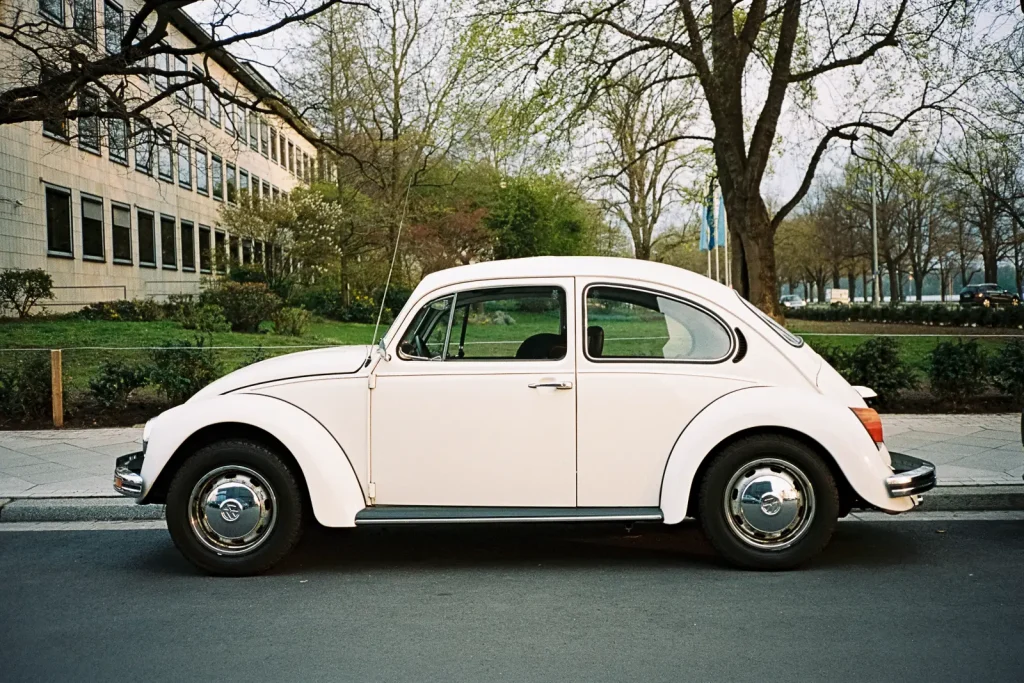
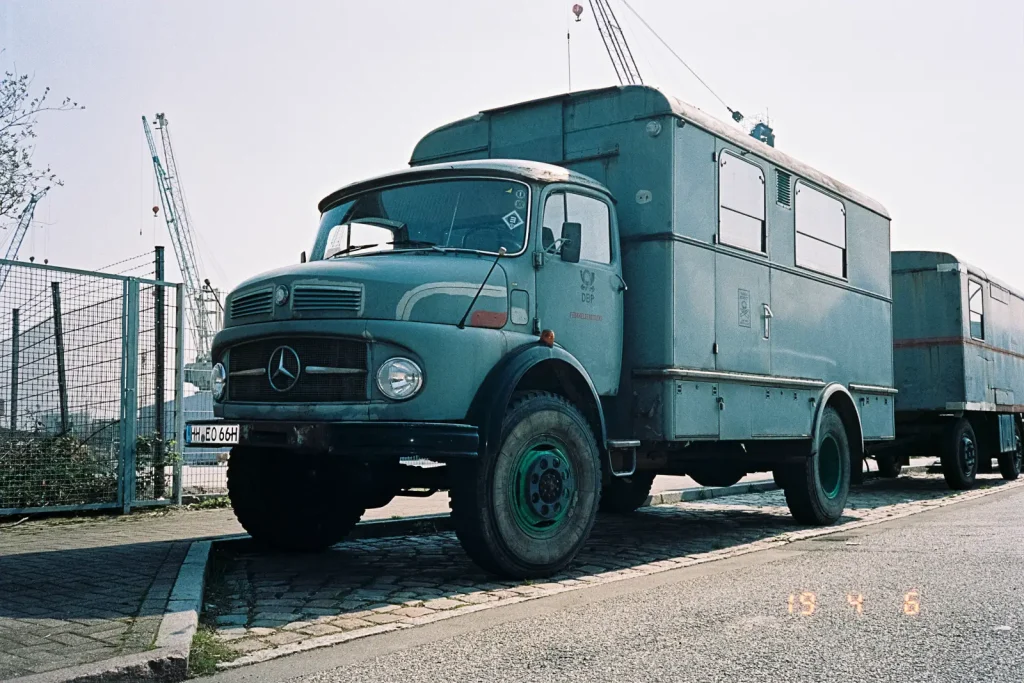
Port of Hamburg
The river Elbe can be considered as a borderline for Hamburg, separating the northern part from the southern one. (To make it more complicated: Within in the city area, the river itself separates into two streams, the Northern and Southern Elbe – or “Norderelbe” and “Süderelbe” in German. I’m talking about the Northern Elbe in this paragraph.)
The contrast between the two river banks couldn’t be more obvious than close to the city center (real Hamburgers, please feel free to correct me). At the northern bank (of the Northern Elbe), you will come across one million of tourists at least. This is where the famous sights are located as there are: the St. Pauli Piers, the Elbphilharmonie concert hall, the HafenCity / Speicherstadt district and – a little bit further away from the river – St. Michael’s Church (“Michel”) and the UNESCO-listed Kontorhaus district with the Chilehaus. But at the southern bank, within sight of all the glamorous landmarks, you will find a vast area with many small and often derelict businesses. This is exactly where I went…
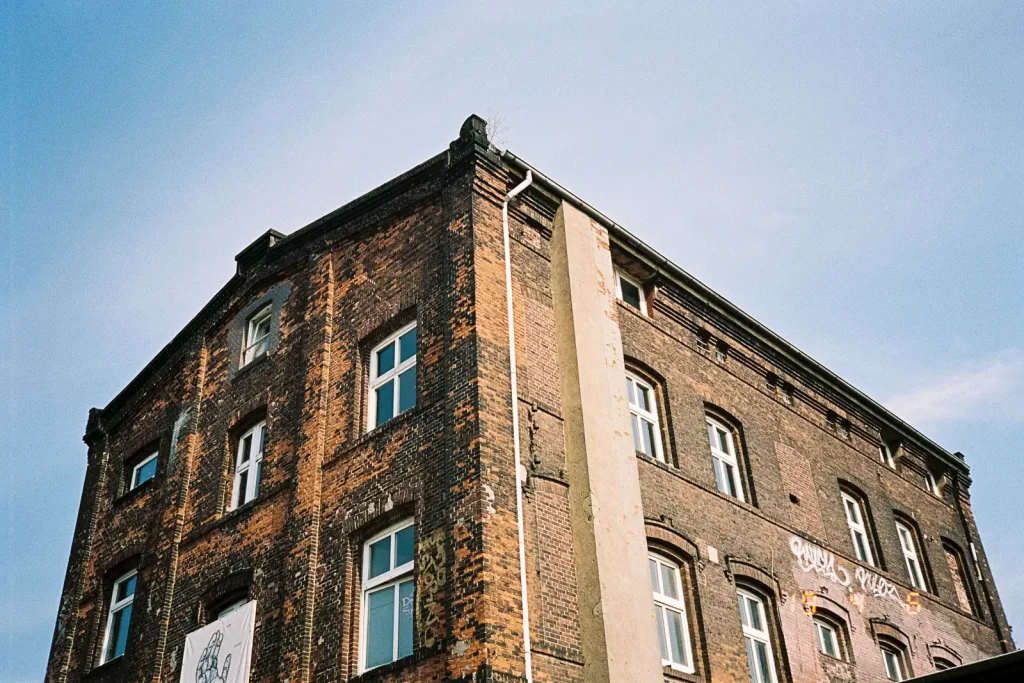
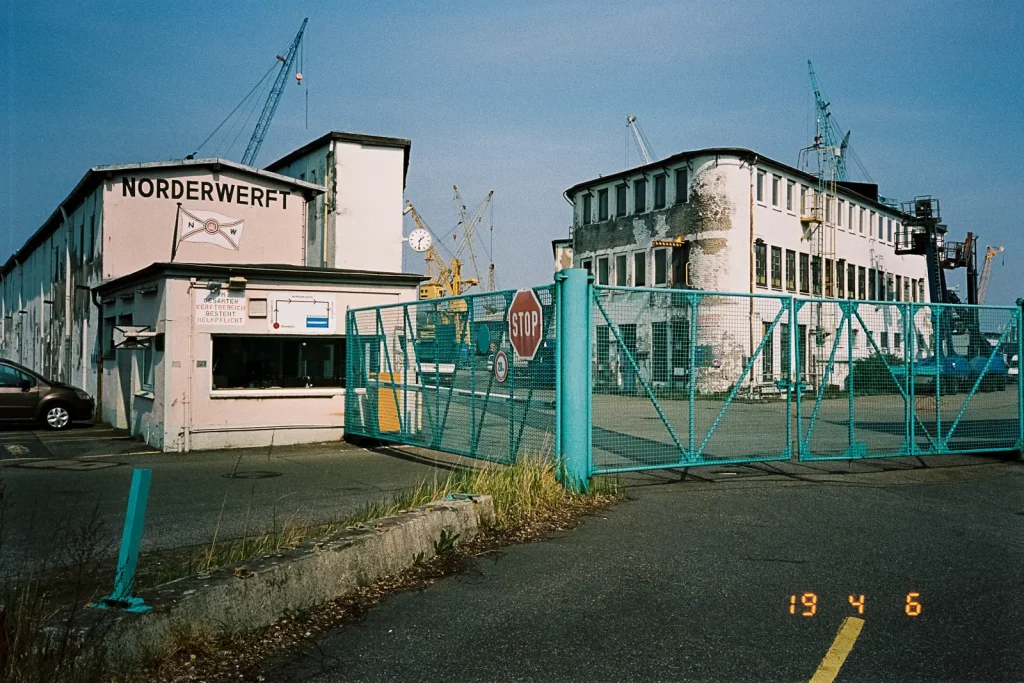
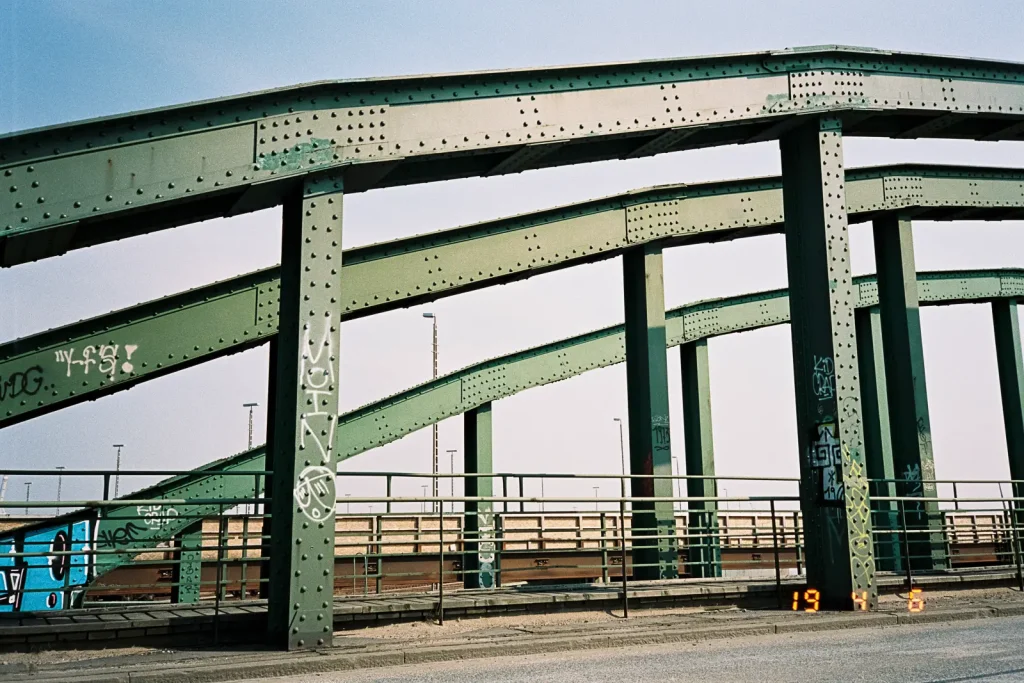
Misburg
It takes me a nine-minute train ride to get to Misburg, a quarter shaped by the cement industry. I have been there countless times, each time discovering something new. Well, I suppose that’s not coming from the many developments this area undergoes (as it does not undergo any developments) but from my attraction towards bleak and grey industrial zones. My favorite conditions are when a dull sky matches the cement-grey soil.
My usual selection of spots consists of cement works (one in service, another one abandoned), an ethanol factory, dumpster stockyards etc. They lie scattered across a fairly large zone – so when I’m normally returning from Misburg, my legs have faced several kilometers of walking before. You see, photography is good for your health!
This area also does a great job as “testbed” for new cameras – I know what to expect and if something goes wrong, I can easily return another time.
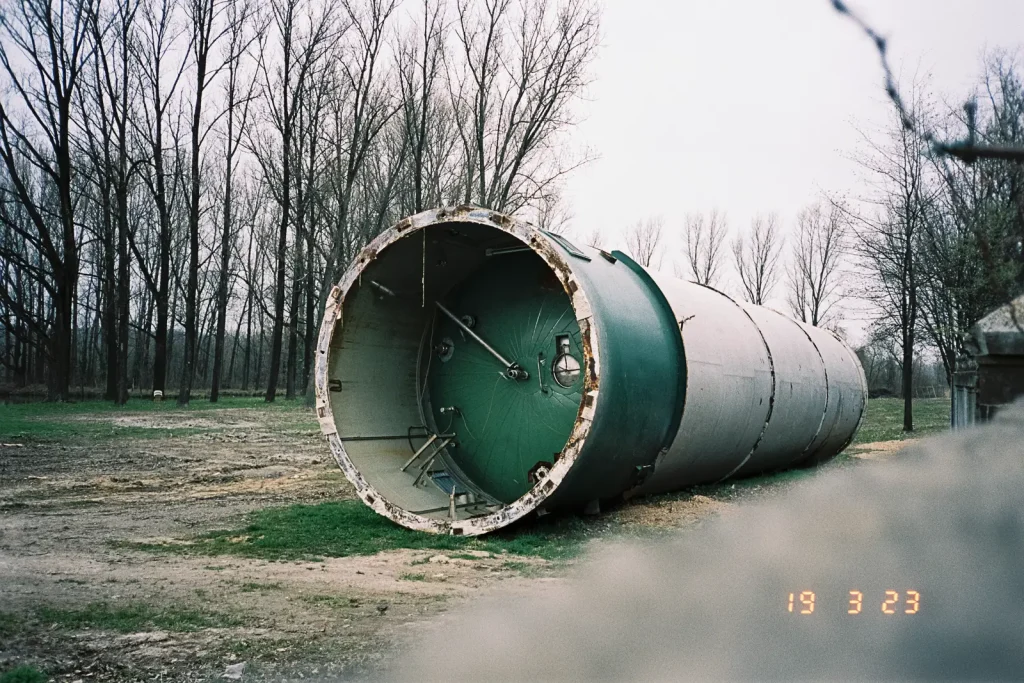
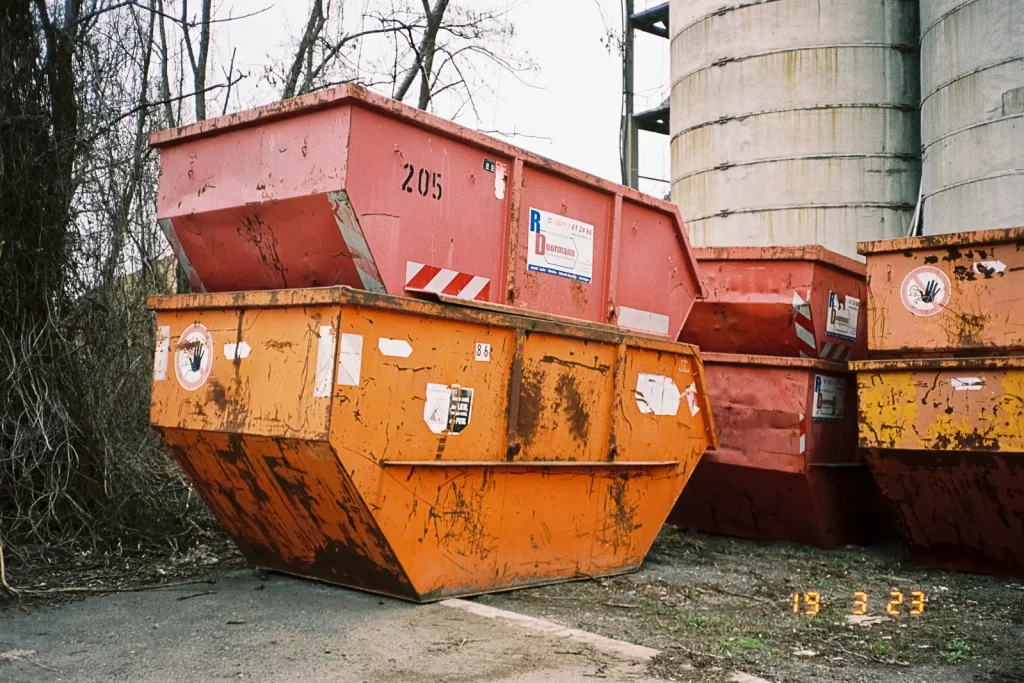
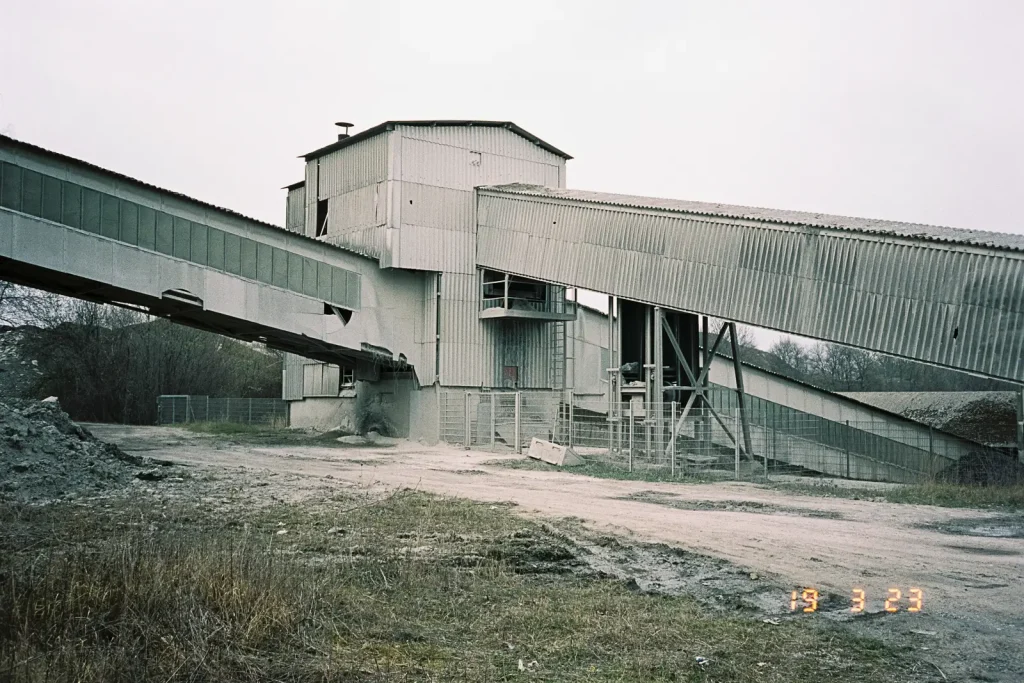
Construction Machine Cemetery
I spotted this incredible place while travelling with a regional train, a site full of construction machines in different states of disassembly and decay. It took me roughly 24 hours to succumb this temptation. Fortunately, the site was located close to a small station, meaning I had to walk only a couple of minutes. Of course I arrived there early, way too early. I wanted to take my photos around dusk, but the sun was still high in the sky. So I waited anxiously for about one hour in a safe distance. The site was publicly accessible (open gate, no “No trespassing!” signs) – however, it didn’t give the impression that strangers should be there. Therefore, I preferred to act quickly and took care to not cause any stir. Thirty minutes later, my raid was over, and I happily returned to the train station.
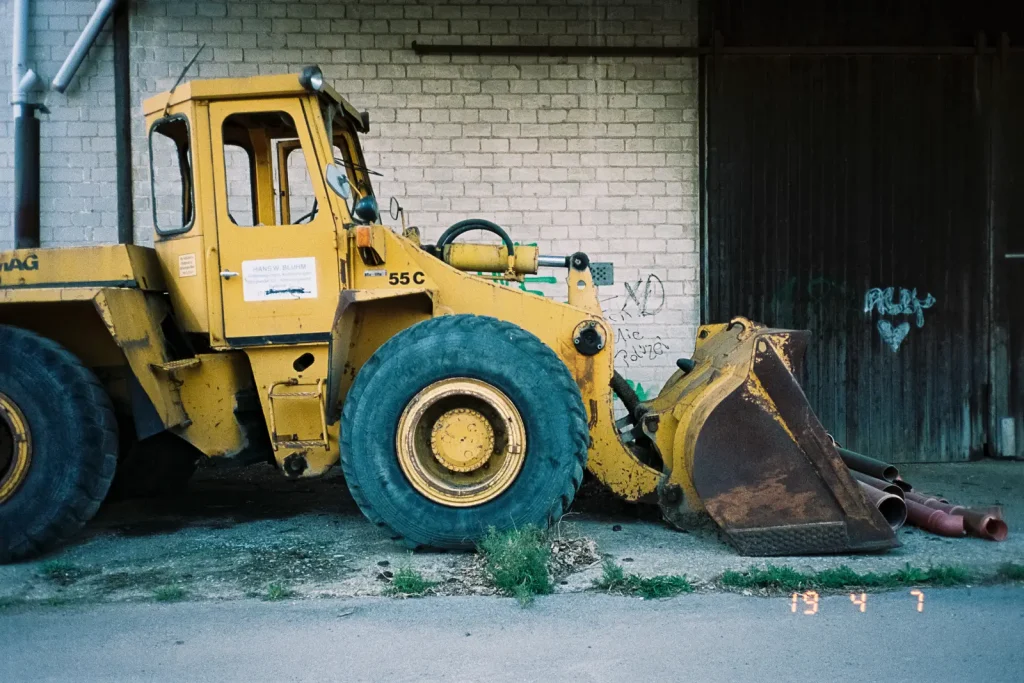
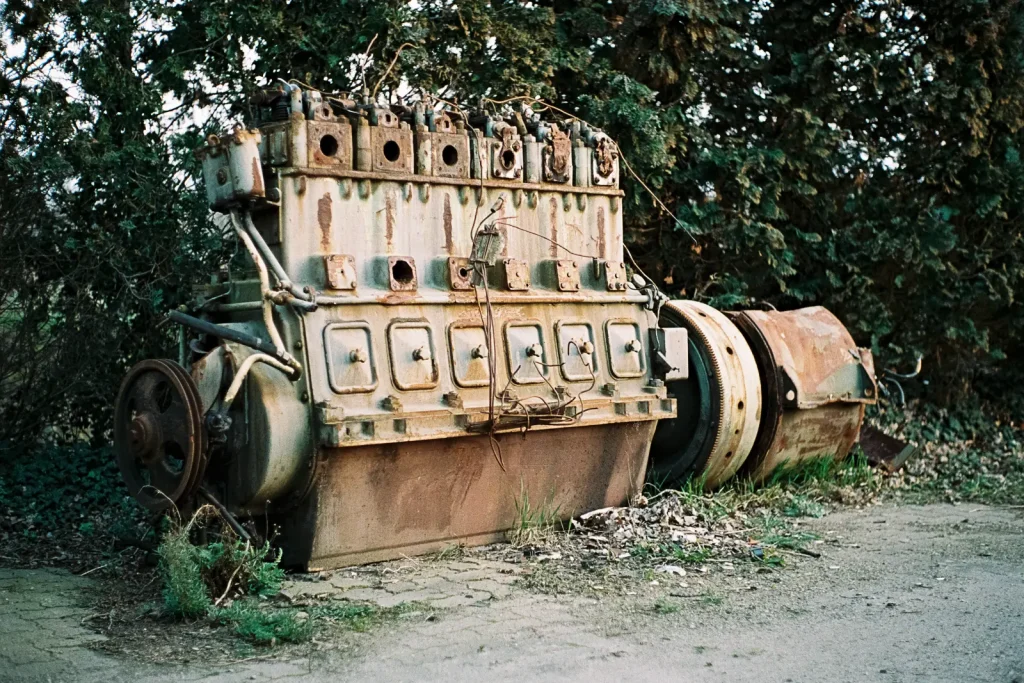
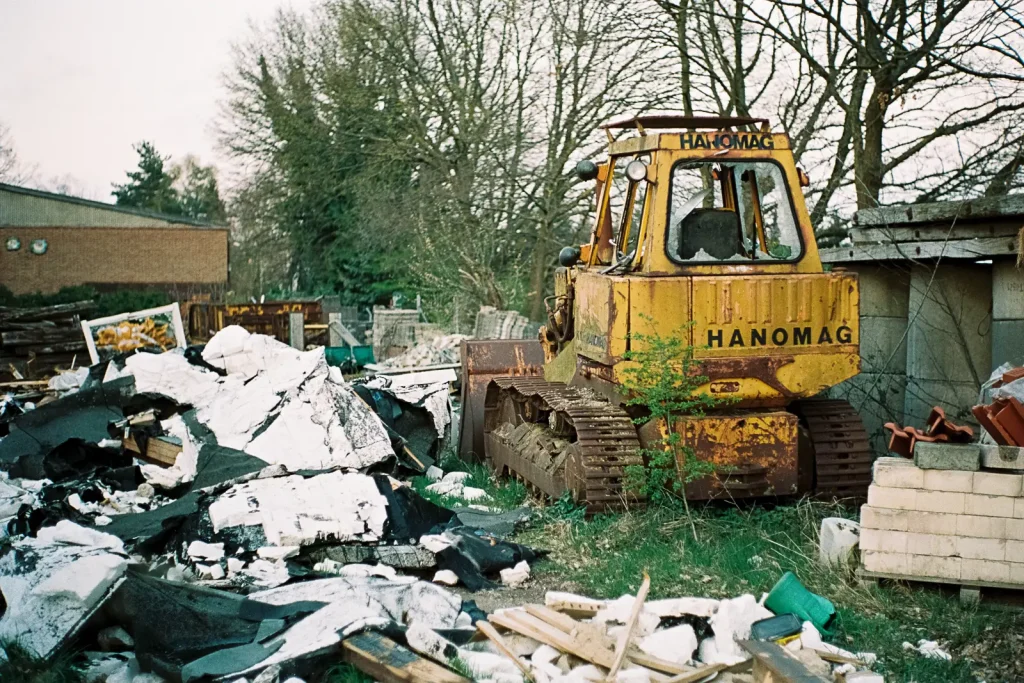
Rural Scenes
The region surrounding Hannover is shaped by agriculture. I must admit, I have something like a romanticizing bias for the countryside. Each time I leave town and come across a rural scene, my heart literally jumps.
In the 1970’s, the Hannover-based photographer Heinrich Riebesehl documented this area on black-and-white film and published his photographs afterwards in the book “Agrarlandschaften” (= agricultural landscapes). I’ve been deeply impressed by these unpretentious images since I saw them for the first time. Riebesehl showed mundane scenes like beet clamps, farm houses or cabbage fields. I feel inspired by these photographs and at the same time, they induce a strong feeling of melancholia in me. (You can find some of the photographs at the artnet page.) In contrast to Riebesehl’s work, I like the rural landscape also portrayed in color – especially in Portra’s subtle palette.
Normally, I prefer to be on foot while out photographing: I arrive at a scene by train, tram or bus and then continue walking. This approach perfectly suits my needs within town – but in the countryside, nothing beats a bike. This way I can cover fairly large distances and access remote spots as I’m not dependent on a decent road. At the same time, I can stop at any moment. Furthermore, the bike’s rather low velocity (compared to a car or train) allows me to scout thoroughly while moving.
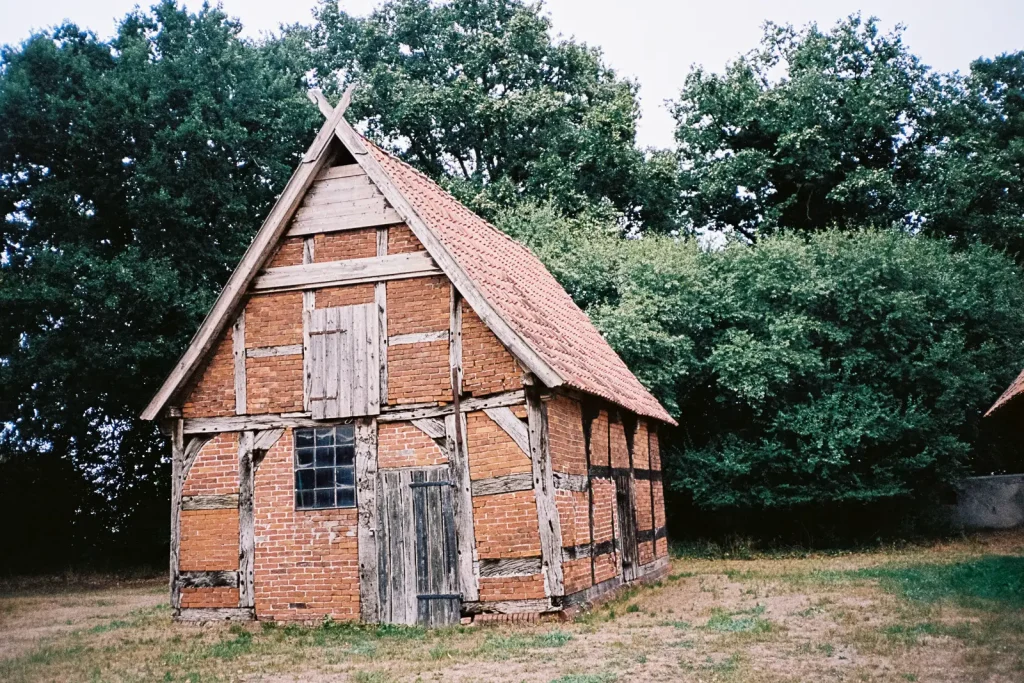
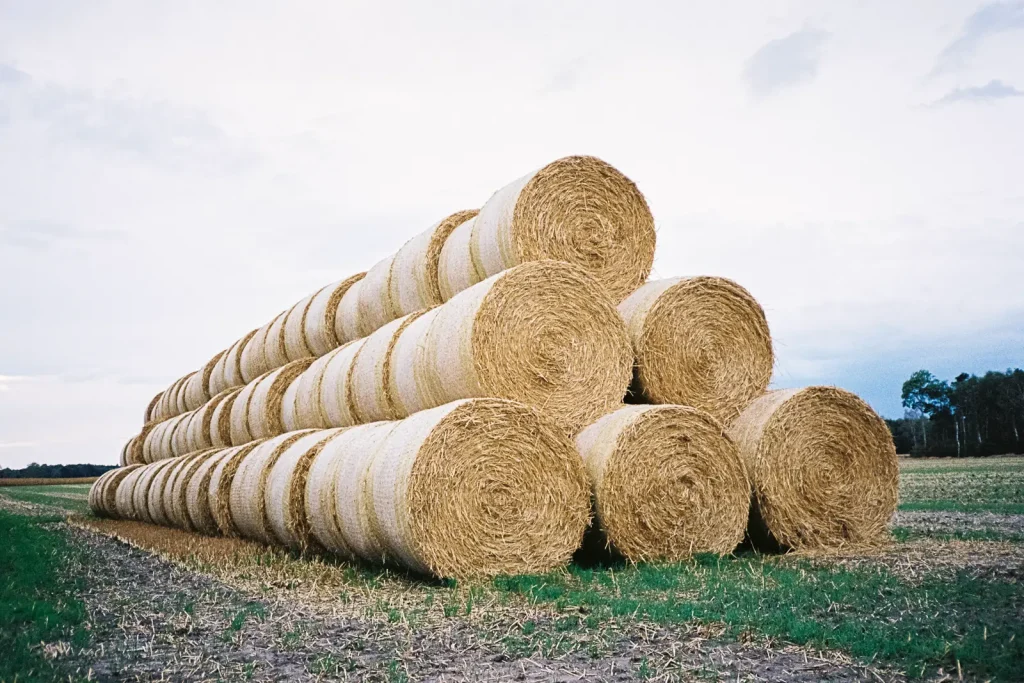
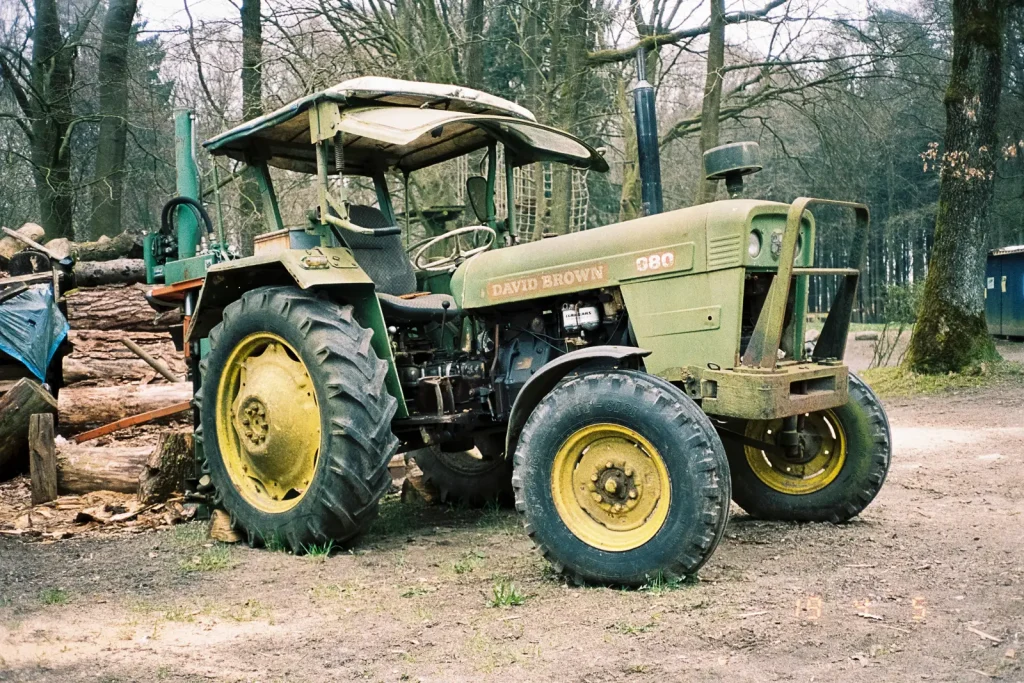
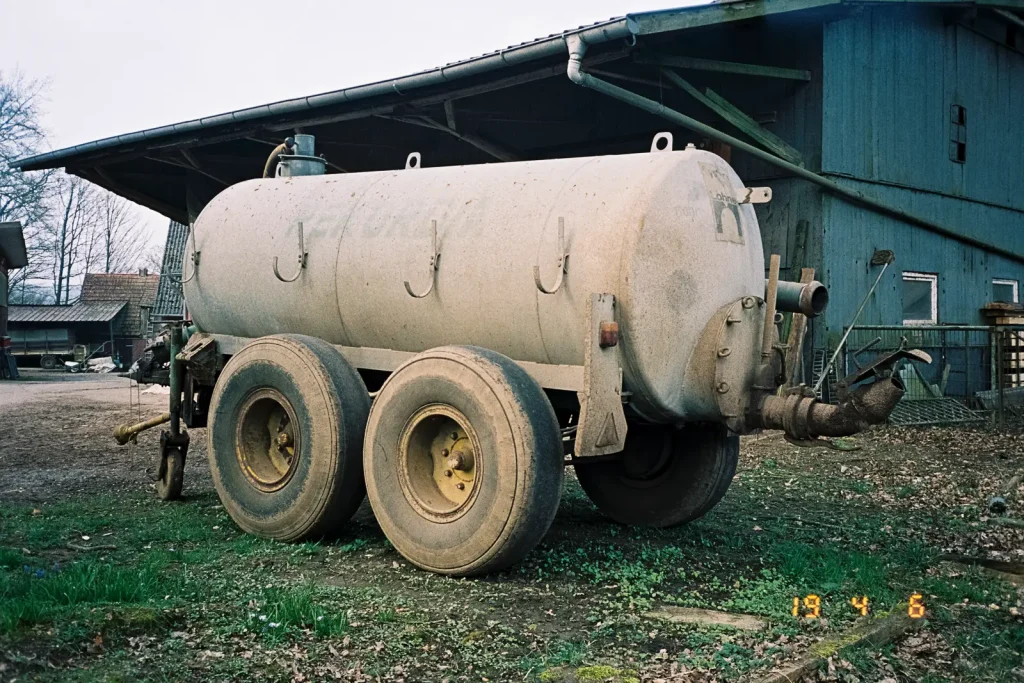
And Even More Images
While reviewing the potential photographs for this article, I noticed a tendency of mine to place the main subject somewhere near the center of the frame. I also like to show objects as a whole, provided that’s appropriate. This sculptural representation of ordinary things is what appeals to me, I think.
The distinct vignette often found in (Nikon) point-and-shoots even favors this centered-subject compositions. Therefore I’m not bothered about the vignette – the opposite is true! Remember our camera as a time machine? A strong vignette virtually boosts us to the eighties.
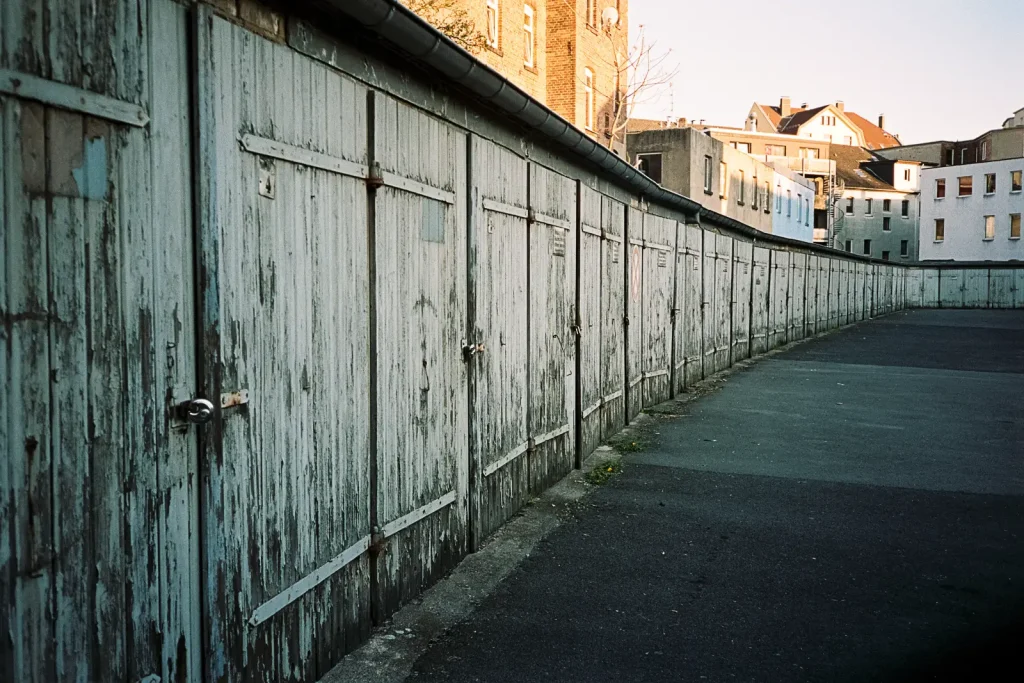
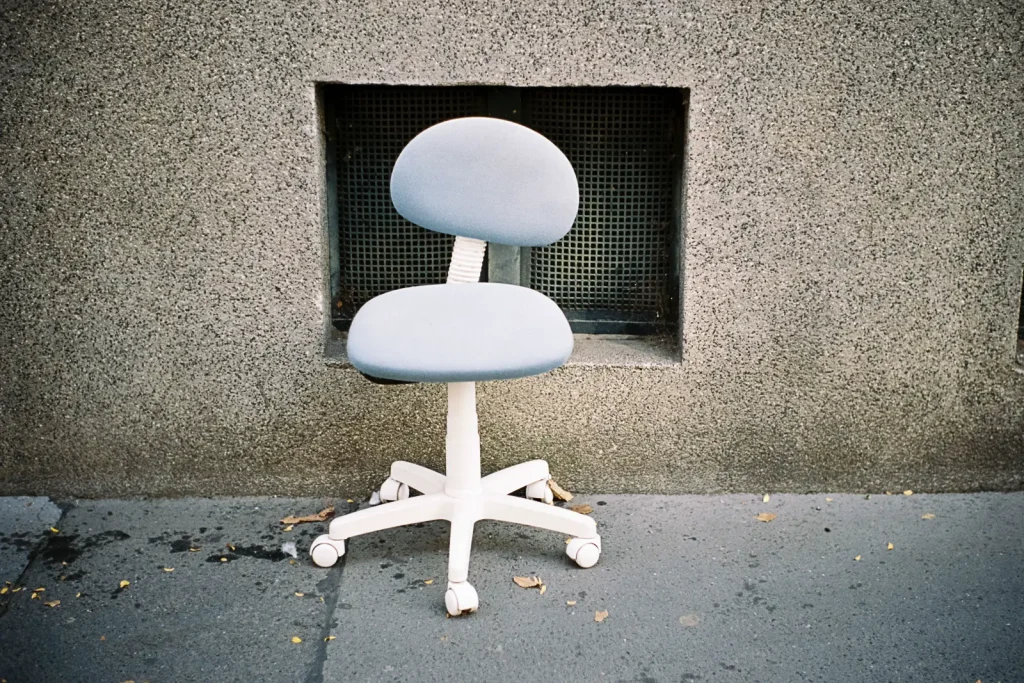
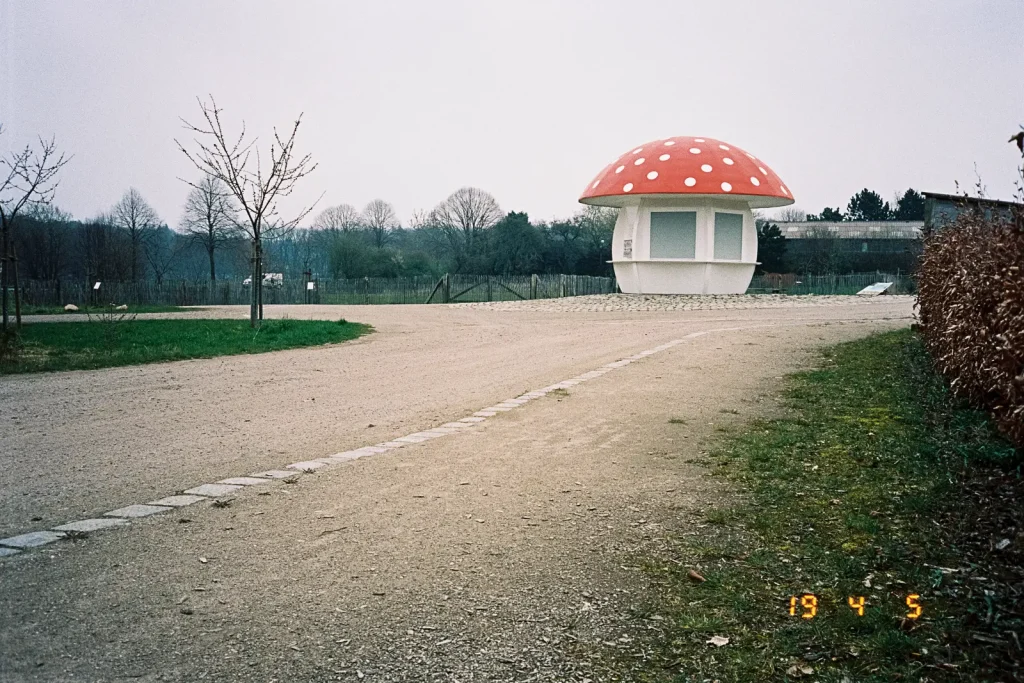
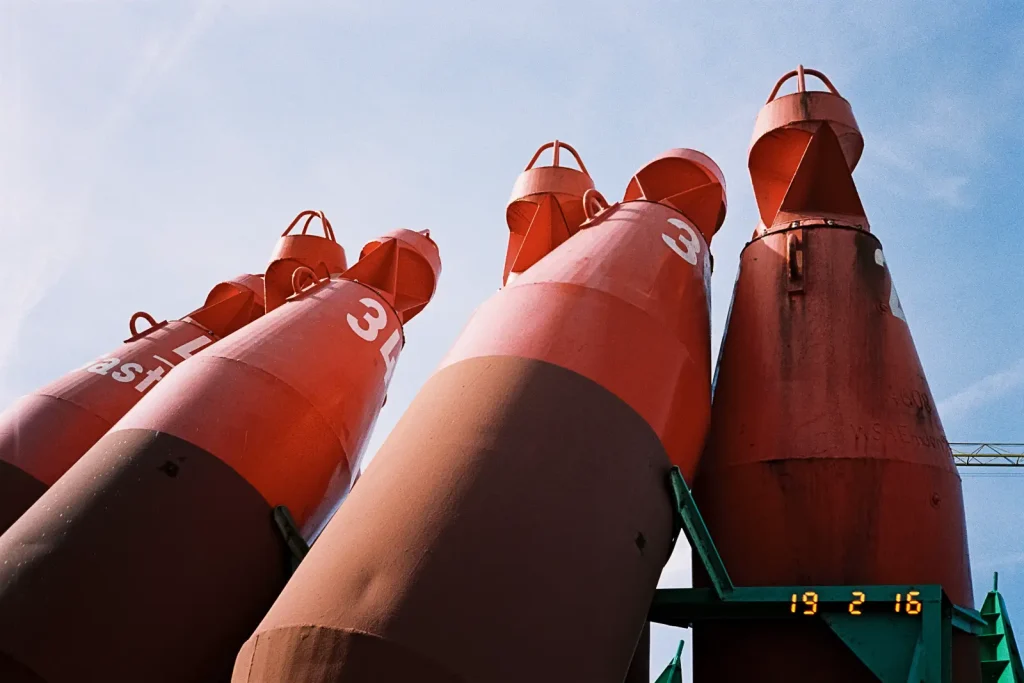
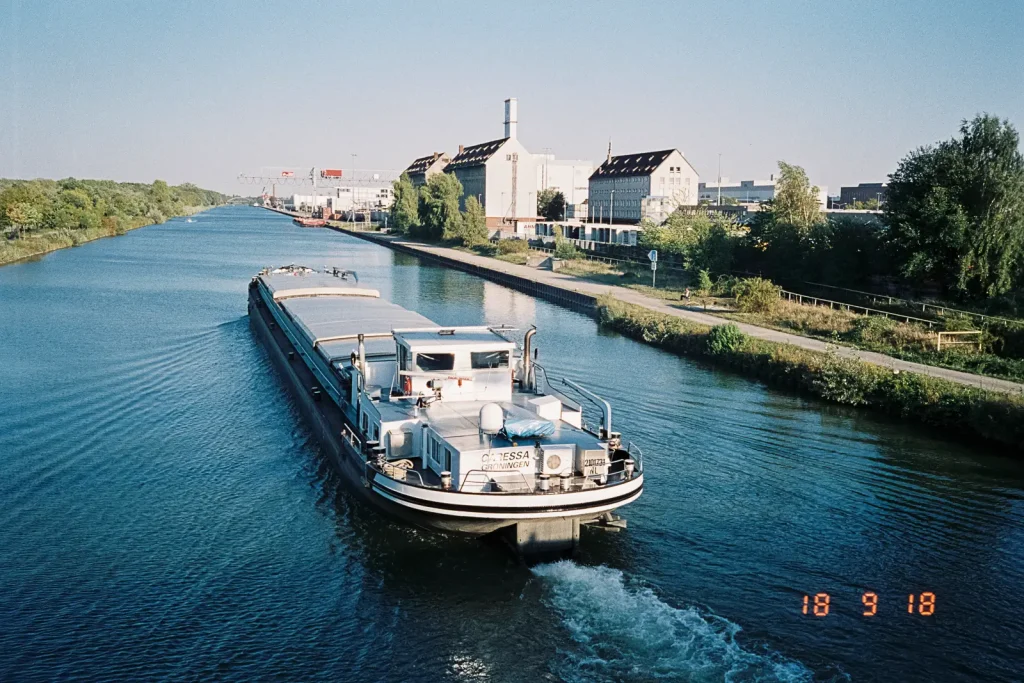
Expanding my Horizon
Have you noticed that there are no humans visible in the photographs I presented you here? (The only exception is the old lady searching the dumpster in the third image – the one with the maroon Volkswagen). Well, I pretty much like documenting human spaces and traces without actually showing humans.
A different thing that has started to grow in me are “vintage fashion shots”. I discovered these types of images at – you won’t be surprised – Instagram: young people dressed in retro clothes from the eighties or nineties, garnished with accessories from the same area (e. g. boomboxes, disco balls), mostly shot with point-and-shoot or Polaroid cameras. To get yourself an impression, please have a look at the Peggy’s outstanding work. I experience a strong feel of nostalgia each time I’m looking at these images. Definitely something I want to try myself.
Thanks for reading – you can find my own Instagram here. Keep on pointing and shooting, folks!
Share this post:
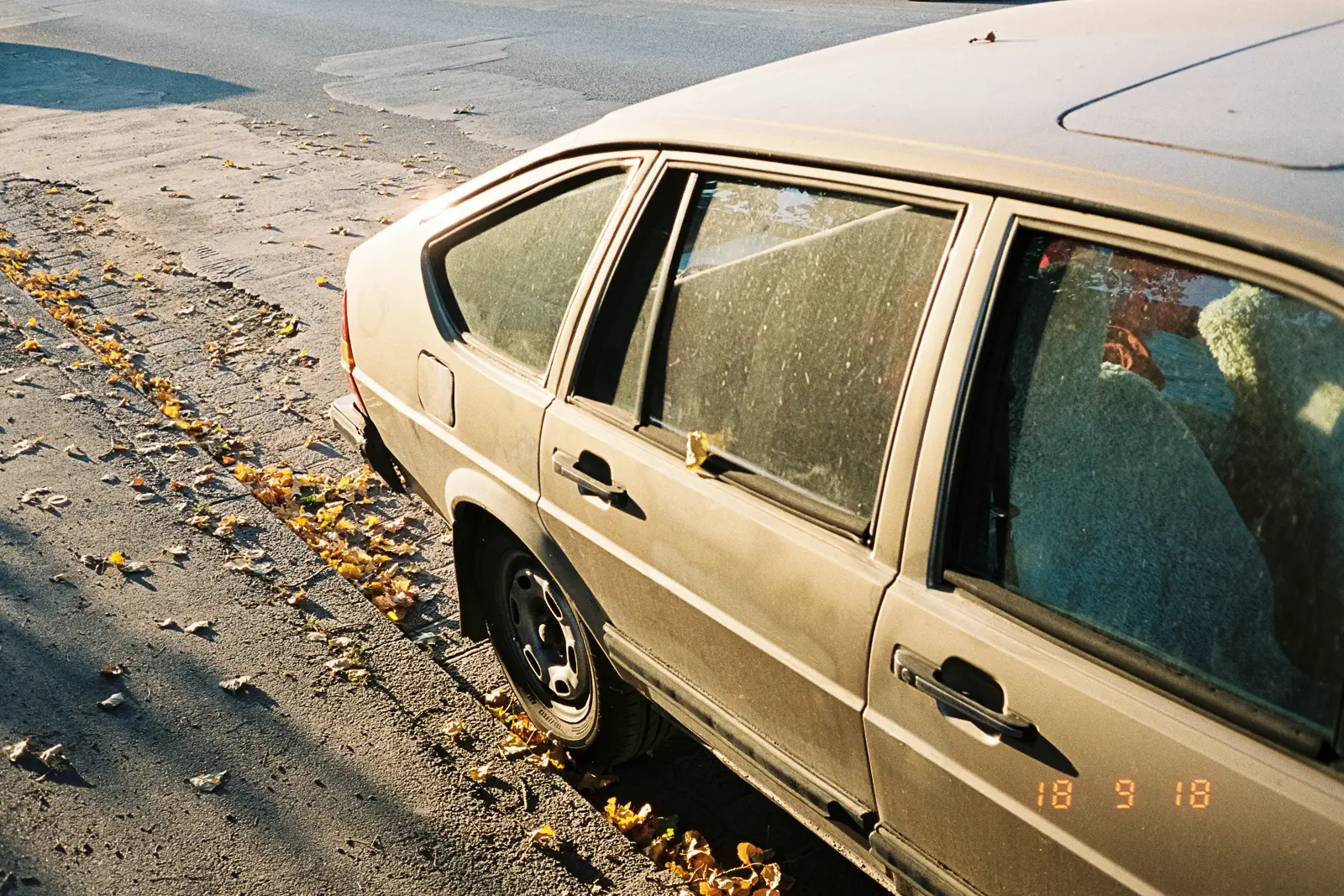








Comments
alan withington on Compact Magic: Turning into a Point-and-Shooter – By Christian Schroeder
Comment posted: 24/05/2019
Comment posted: 24/05/2019
Michael Gayler on Compact Magic: Turning into a Point-and-Shooter – By Christian Schroeder
Comment posted: 24/05/2019
Comment posted: 24/05/2019
Khürt Williams on Compact Magic: Turning into a Point-and-Shooter – By Christian Schroeder
Comment posted: 24/05/2019
"In my head, I named this “creating fictional memories” – I capture images that evoke the feeling of bygone times. Times I didn’t experience myself because I hadn’t been born back then."
I find that interesting. It's a form of manufactured nostalgia. I was born in 1966 and started my photography (including developing my film) journey in the 1980s. For me, nostalgia is real. I switched to digital in 1999. I prefer digital.
I bought a roll of Ilford HP5 to shoot in my Asahi Pentax Spotmatic II when my father passed away this spring. His Spotmatic II was the camera he used when I was a child. The nostalgia is real even when I shoot modern subjects.
Comment posted: 24/05/2019
Comment posted: 24/05/2019
Comment posted: 24/05/2019
Marty Cutrone on Compact Magic: Turning into a Point-and-Shooter – By Christian Schroeder
Comment posted: 24/05/2019
Sien Hong on Compact Magic: Turning into a Point-and-Shooter – By Christian Schroeder
Comment posted: 24/05/2019
Lilianna Elrod on Compact Magic: Turning into a Point-and-Shooter – By Christian Schroeder
Comment posted: 24/05/2019
I too love Portra and small cameras.
You do exceeding well with yours.
OB1 on Compact Magic: Turning into a Point-and-Shooter – By Christian Schroeder
Comment posted: 24/05/2019
Richard Parkin on Compact Magic: Turning into a Point-and-Shooter – By Christian Schroeder
Comment posted: 24/05/2019
Your Mr Brown is very unassuming but needs no introduction, being the David Brown (DB) of DB Aston Martins.
At the Machine Boneyard: 10 Frames of Scrap Metal – by Christian Schroeder - 35mmc on Compact Magic: Turning into a Point-and-Shooter – By Christian Schroeder
Comment posted: 02/06/2020